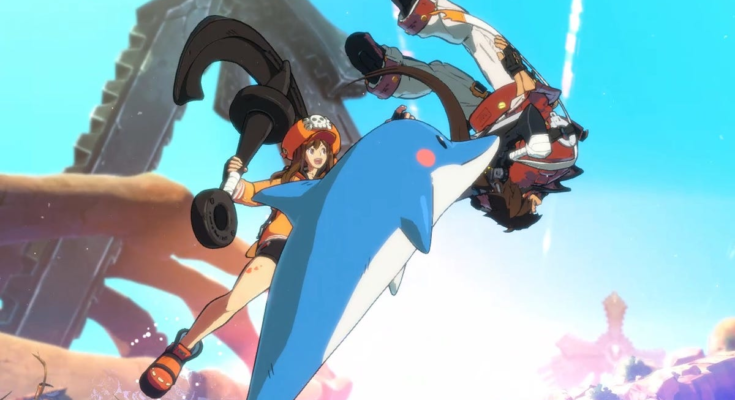
The incredibly long Guilty Gear Strive loading times that have persisted since its launch four months ago have finally been fixed, but not by the developers at Arc System Works. As is often the case, the job instead fell to an independent engineer, whose custom executable reduces the PC version’s initial wait by up to 75%.
As we covered back in June, Guilty Gear Strive is plagued by persistent issues on boot, specifically the inordinate length of time it spends connecting to Arc System Works’ servers. Strive currently forces players to wait several minutes as it performs its startup routines, which is, hilariously, more than enough time to beat games like Super Mario 64 and Castlevania: Harmony of Dissonance (via speedrunning, but I digress).
That’s where the utility called Totsugeki comes in. Developed by Weilu “optix2000” Jia and named after Guilty Gear veteran May’s infamous dolphin attack, Totsugeki is a standalone executable that acts as a proxy between the game and the servers to which it so valiantly spends time establishing connections. The best part is that it doesn’t require any installation or convoluted tinkering as long as you’re on PC; just download, run, and enjoy.
I’m not at all technologically minded, so here’s an explanation of how it works from Jia himself:
[Guilty Gear Strive] makes a new TCP connection and a new TLS connection every API call it makes. And it makes hundreds of them in the title screen.
Totsugeki solves this by proxying all API requests through a keepalive connection.
What this means is instead of doing 4 round trips (TCP + TLS + HTTP) for each API call, it only needs to do 1 (HTTP only). This shortens the loading time by a factor of FOUR! For example, if you live in the EU and have ~300ms ping to the GGST servers, you usually see something like 300ms * (1 TCP round trip + 2 TLS round trips + 1 HTTP Request round trip) = 1.2 seconds per API call.
This multiplied across all 127 API calls needed to get to the main menu means it takes a whopping 152 seconds (2.5 minutes) to load into GGST.
With Totsugeki, this is brought down to a mere 38 seconds.
This has the added bonus of reducing GGST server load, as TLS negotiation is one of the most CPU intensive tasks today.
In layman’s terms, Totsugeki condenses the over 127 separate connections Guilty Gear Strive normally makes to Arc System Works’ servers into far fewer. This saves a lot of the time those connections spend establishing themselves, which has the effect of dramatically increasing the speed with which the game loads if you, like many players, happen to live outside of Japan.
Totsugeki also comes with an option to load even more quickly—known as Unga Bunga, another fighting game community in-joke—but Jia warns these speeds are unsafe compared to the base settings, and may cause weird bugs or break Guilty Gear Strive.
G/O Media may get a commission
“Once again someone with a bit of time on their hands fixed the biggest issue with a fighting game,” wrote one grateful fighting game player on Twitter.
Jia’s response? “You end up having a bit of time when you have to wait five minutes to get into the game.”



